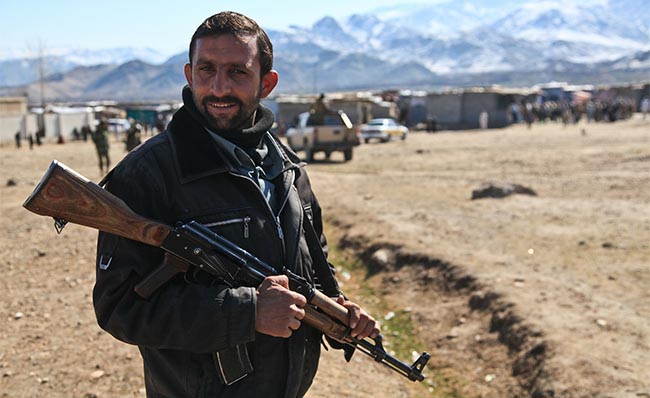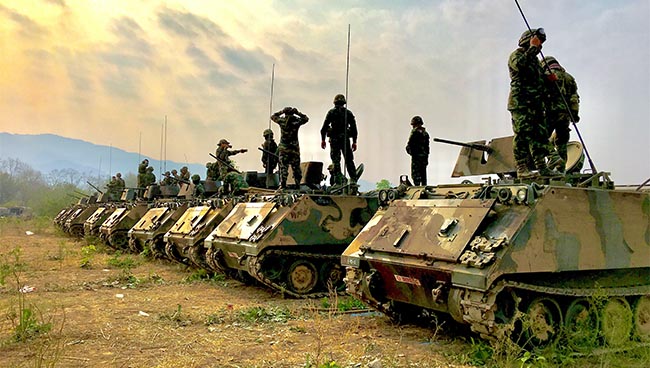By Eve Massingham and Annabel McConnachie
It would be reasonable to expect that the very first article of the most widely accepted of international legal treaties – Common Article 1 to the four Geneva Conventions of August 1949 (CA1) – had been extensively studied. Yet, as a small number of commentators have noted, this is not the case, and indeed, this article has perhaps always attracted less attention than it arguably should have (see, for example, Kalshoven at p.16, 27-28). When the ICRC embarked on its now published (2016) Geneva Convention Commentary update project, it was clear that some renewed interest in CA1 would ensue. And indeed it has. Sparking some healthy debate.
CA1 asserts that the High Contracting Parties must respect the Conventions ‘in all circumstances’. This requires States to implement the law within the Conventions domestically and adhere to the rules in good faith, in times of war and peace. In addition, States must also ‘ensure respect’ for the Conventions – and it is this obligation which is the most interesting to examine.
We began our own exploration of the concept of ensuring respect for IHL by focusing on how States approach the laws pertaining to weapons regulation. Following on from this body of work, we began considering what ensuring respect might look like across a range of different areas of IHL (such as targeting, detention and the actions of private actors or foreign fighters). To this end we approached a number of experts with areas of interest where we felt it might be possible to observe whether, and how, States fulfil this obligation – indeed, whether they consider it to be a legal obligation at all. The results of those considerations are contained in Ensuring Respect for International Humanitarian Law published by Routledge in August 2020.
Scope of ‘Ensure Respect’
As with many terms within an international treaty, there has been debate about what ‘ensure respect’ was intended to mean when drafted, and indeed might mean today. Arguably, the term includes both an internal but also an externally facing obligation (see for example, Geiss). States must exercise, to the extent possible, their influence on all parties to a conflict to limit conduct and alleviate the destructive consequences of war. This influence may be exercised both negatively – in the sense that a State must refrain from actively supporting or assisting the party to a conflict engaged in the violation of IHL, or positively – to encourage or support the party to a conflict to actively respect IHL.
What we wished to explore was how States exercise this influence: what tools they use, whether diplomatic, economic or political. To look closely in a particular thematic area at how these tools are employed, whether in relation to detention, weapons use or development of international laws. Rarely do States or non-state actors work alone in an armed conflict. Whether through shared military resources (arms, intelligence, coalition forces) or political and economic support, these partnerships offer ample opportunity for States to influence those directly involved in fighting. More broadly States are able to influence the environment in which conflict takes place. For example, they can influence whether or not there is a general understanding and acceptance of the benefits of IHL, or whether the limitations of military conduct are valued by those participating in war to the extent that they are genuinely applied.

It is not sufficient for States, groups or individuals to understand laws in order to follow them. Laws must be internalised and accepted to such a degree that their adherence is normalised.
There has been much discussion in recent years about changing the narrative of IHL, to highlight the benefit of observing these laws and to report the good news of how parties to a conflict do exercise restraint. But this is a difficult exercise and, as Dr Durham has previously indicated, “attempts to capture examples of when humanitarian law is followed is like capturing something that didn’t happen”. However, that does not mean that we should not attempt to identify when States take steps which ‘ensure respect’ for the law and enable the parties to the conflict to increase their opportunity to respect IHL.
Mechanisms to Ensure Respect
What we found from the contributions to the book is that there is a spectrum of practical measures that States can adopt, and which fulfil the requirement for them to ensure respect for IHL. These fall into three broad themes and each of these measures contribute to other States and parties to an armed conflict being able to respect IHL.
At one end of the spectrum and the first identified theme were measures which States take individually. These are largely exercised domestically, often reflecting actions which are designed to ‘respect’ IHL directly. Whether implementing appropriate domestic legislation or supporting the study of and dissemination of IHL or training military forces. The second theme identified were measures which involve States operating collectively, contributing to building a strong, respectful framework of law – specifically IHL but more broadly building protection for all people within domestic and international law.
Both these categories of actions may be distant in time and geography from any identified conflict and can be undertaken during peace and war. These measures can and should be continuously advocated to help develop a truly conducive environment for the protection of persons when conflict does occur.
At the other end of the spectrum lies the third identified theme, which includes a series of measures which can only be effective when utilised by third States that have a direct and tangible influence over a State or party directly involved in an armed conflict. Those States that have this relationship with the party involved in an armed conflict can – and should – take steps to actively encourage compliance with IHL. That influence may be exercised through persuasive, diplomatic channels but equally through more publicly assertive and coercive measures such as the application of sanctions. It is of course dependent on the third State exercising an appropriate level of due diligence to ensure that it is aware of the situation developing.

Tools for Ensuring Respect
These three broad themes or group of measures overlap and are often mutually reinforcing and complementary: they should not be neatly compartmentalised.
The external facing component of the obligation cannot be exercised unless a third State chooses to respect IHL by fully implementing the laws within its own jurisdiction. The capacity to respect IHL therefore has a direct impact on a State’s capacity to influence external actors to respect the law. However, this does not mean that a State’s performance in respecting IHL needs to be perfect but rather that States should constantly strive to improve domestic compliance concurrently with their efforts to encourage others. It is the capacity to demonstrate ongoing and positive support for all aspects of IHL – respecting the law, adopting measures which contribute to building a conducive environment for advances in IHL and in particular, for those third States that have a particular relationship with the party involved in an armed conflict taking steps to actively encourage compliance with IHL, which is most important.
What does the future hold?
It is hoped that the requirement to ensure respect for IHL will continue to be further explored. The range of practical actions identified under the three broad themes that emerge within this edited work require further examination to see whether they are reflective of actions taken right across the gamut of IHL related activities. Measuring the practice of States or parties to a conflict which specifically supports CA1 may not be easy, but this is certainly no excuse for failing to continue to develop a more positive narrative around how ensuring respect for IHL can be achieved.
Eve Massingham is a Senior Research Fellow in the Law and the Future of War team at the University of Queensland School of Law. She has worked in the field of IHL for ten years with the International Red Cross and Red Crescent Movement throughout East and Southern Africa and in Australia. Annabel McConnachie has worked with the IHL team at Australian Red Cross as a volunteer and staff member since 2003. Primarily involved with dissemination activities, she led the project developing a series of advocacy publications in collaboration with Pacific National Red Cross Societies for high-level engagement with parliamentarians. The authors are the editors of Ensuring Respect for International Humanitarian Law (Routledge, 2020).
This article appeared on ILA Reporter.



